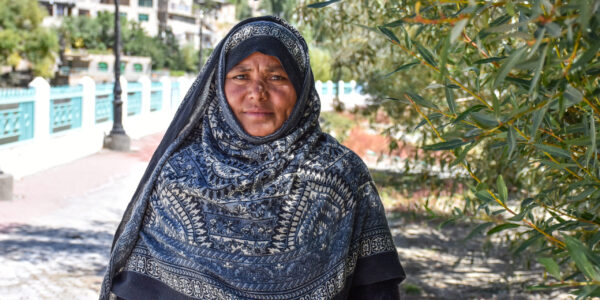How Mushroom Production is Empowering Women in Kargil?
A research survey conducted by scholars from Jawaharlal Nehru University found that 40 percent of families in Ladakh had absolutely no income during the COVID lockdown from April to June this year. Hajira Banoo (40) was not among those 40 percent. She found an innovative source to secure her livelihood while sitting in isolation at home.
Hajira, mother of four children, apart from nurturing her offspring is growing mushroom at her home in Titichumik. Yes, Mushroom! And it is produced now in Kargil itself. It is needless to say that Mushroom are fat-free, low-sodium, low-calorie, and cholesterol-free. They’re also packed with fiber, vitamins, and minerals. Nutritional benefits vary depending on the type of mushroom. But overall, they are a good source of Antioxidants, Beta glucan, B vitamins, Copper and Potassium.
Before introducing to this nutritious crop, Hajira was first introduced with Dr Nasreen Fatima Kacho, Scientist of plant pathology at KVK Kargil-1. Dr Nasreen once visited Anganwadi at Titichumik where she met Hajira, whom she persuaded to grow mushroom at home and provided her all the necessary requirements free of cost.
* Click to Follow Voice of Ladakh on WhatsApp *
The introduction of the new nutritious crop in the cold district would surely result in empowerment of many women like Hajira.
Since last many years, Hajira assisted her husband in increasing household income by selling milk. Later she tried with growing vegetables and then produced manure. This year she embraced the idea of producing mushroom. Producing minerals and mushroom both are easy to sweep the fruit with minimum effort than her earlier sources of income, deliberated Hajira.
Like Hajira, a dozen of other farmers is also growing mushroom in Kargil that seems to be their first experience of its kind. The farmers took inspiration from Dr Nasreen who personally provided them resource as well as technical knowhow and market profitability. It is learnt that Dr Nasreen frequently visits the farmers as far as in Chiktan.
Dr Nasreen first experimented to grow mushroom in 2010 at her home, later she used her office space also. This year she successfully prepared some farmers in different villages of Kargil to go for this crop.
Speaking to the Voice of Ladakh Dr Nasreen said that the lack of awareness about benefits of Mushroom is causing hurdle in production of the crop at large scale. Only few farmers have made their mind at this stage. However, it is hoped that more and more people will fall in line in future with the spread of publicity about benefits of growing this very production.
The secret of growing best mushroom is in maintaining the level of moisture and temperature. It needs different moisture level at different stages and 20-28 C temperature in a dark place.
“Initially we were dependent on outsiders for seeds but now I have produced seeds that have distributed among farmers”, said Dr Nasreen while hoping for support from the community and the administration. If provided her necessary equipment she would be able to produce significant seeds in Kargil itself.
Hoping for more farmers to cultivate Mushroom, Dr Nasreen explained that “Mushroom production has very simple process. Initially we make 1 KG polythene bags of straw that becomes 5 KG after growing through complete process. Normally we gain three harvests from each bag that gives 3-5 kg of mushroom from each bag.”
Motivated by the benefits of the crop, Hajira intends to grow Mushroom in winters also; however, she is not sure whether it would sustain the harsh cold whether or not. Commenting on this very point, Dr Nasreen said that she is working in this direction to grow mushroom in winter. As per her statement, she has an idea to make a special box for the purpose that would be kept in the kitchen where the temperature remains normal. Mushroom has a very high demand in Kargil while the production and supply are very few. It has the potential to become an alternative source of income for local farmers and ingredient for food in winter season, calculated Dr Nasreen. Mushroom can be dried and stocked for winters also. In case of less demand in market it can be stocked for winters; so, no fear of getting contaminated, explained Hajira.
The article was first appeared in the Voice of Ladakh Print form on 21 September 2020.
1 Comments
Leave a Reply

good initiative